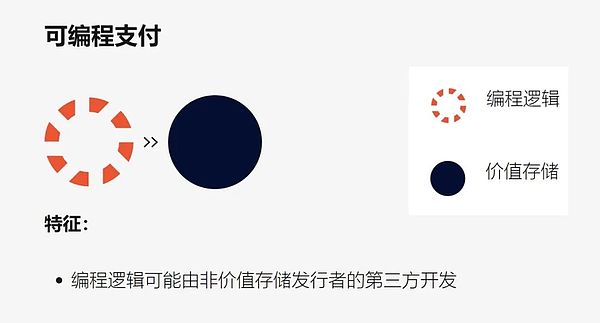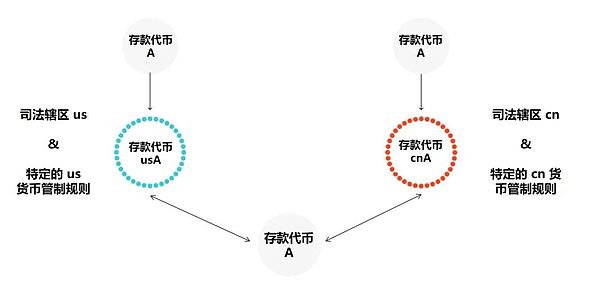
From ancient times to the present, shells, coins, cash, deposits, electronic wallets, etc. have been the carriers or expressions of money. These carriers and expressions are in line with the continuous changes of the times, just like the digital economy era is derived based on blockchain technology in today’s digital economy eraThe digital currency form and the Web3 payment ecosystem built from this.
The most important thing is to understand that the essential attributes (value scales) and core functions (mediate media of exchange) of money are unchanged.
The birth of programmable payments, programmable currencies and special currency is also aimed at further highlighting the essential attributes of currencies through digital currency and blockchain technology, strengthening its core functions, improving currency operation efficiency, reducing operating costs, and strictly controlling risks.Give full play to the positive role of currency in promoting exchange transactions and the application of economic and social development.
Therefore, this article aims to sort out the concepts of programmable payment, programmable currency and special currency by sorting out the article JPM: Understanding Programmable Payments, Programmable Money and Purpose-Bound Money, and further promote the application and implementation of Web3 payment.
Below, Enjoy:
As the world moves towards a more digital and technological future, the pattern of financial transactions is rapidly evolving.Continuous advances in technology, including the use of blockchain platforms and smart contracts, are making currency and payments more “smart”, such as embedding payment logic and conditions into digital currencies.These concepts are revolutionizing our view on currency and financial transactions, providing unique advantages and capabilities in the digital economy.
There are many ways to achieve programmability of digital currencies.A recently released technical white paper on Purpose Bound Money (PBM) by the Monetary Authority of Singapore (MAS) divides it into the following categories:
ProgrammableProgrammable Payments:Payment is automatically performed once a predefined set of conditions is met.
Programmable currency(Programmable Money):Embed rules in the store of value itself to define or limit their use.
Special currency(Purpose-Bound Money):At the protocol level, the usage conditions and transfer rules for the point-to-point circulation of the basic digital currency (Digital Money) are stipulated.
The following will be through examples of different business models for a better understanding.
one,Programmable payment(Programmable Payments)

Most programmable use cases fall into the category of programmable payments.A common example is conditional payment, i.e. payments performed when conditions are met.In the traditional world, forward checks can be considered as a conditional payment, with the check taking effect on or after the interest date and valid for a predetermined period.The accompanying conditions are evaluated before the check becomes effective.In the digital world, programmable payments are usually implemented through blockchain technology, where smart contracts automatically perform payments or operations when certain conditions are met.
A clear and direct use case for programmable payments is automated financial management.Clear financial instructions can help the financial supervisor achieve the account target balance and clear funds that exceed the target balance.Programmable payments can also implement more complex logic, assessing multiple account balances in different currencies and foreign exchange rates, and then transferring money in an optimal way.With JPM Coin System’s real-time 24/7 payments capabilities, the Treasurer will be able to use programmable payments to assist financial management, changing from cash forecasting to instant cash management, which can instantly respond to changing real-world conditions in a programmatic way.
Conditional payments can also make transactions safer without the expensive operational overhead associated with custody arrangements.For example, the buyer can retain funds and only issue funds to the seller after receiving the goods.There are multiple options to achieve this, such as when the buyer confirms receipt, using data from trusted third-party logistics providers, and even using Internet of Things (IoT) devices that track locations to indicate when the goods are delivered to a specific geographicLocation.
The same philosophy applies to digital financial assets.With digital financial assets, delivery vouchers will be presented in digital form.Funds can only be retained and released after successful delivery of digital assets.This is a form of settlement that “money and goods are settled” by synchronizing the transfer of funds and assets, the settlement risk is minimized.
two,Programmable currency(Programmable Money)

Programmable currency goes a step further, directly embedding rule logic directly into the store of value itself.These rules stipulate or the logic of currency use, introducing a new level of control and security for currency.
Unlike programmable payments, programmable currency is self-sufficient, including both programming logic and store of value.This means that when a programmable currency is transferred, it will come with rules and logic.
The rigidity of limiting rules to the value itself may limit the use cases of programmable currencies.These rules need to be restricted to specific scenarios, not in general applications.
3. Special currency(Purpose-Bound Money)

Private currency (PBM) provides the flexibility to customize rules based on specific usage scenarios, while also ensuring a close integration of rules and underlying values.Technically, it can be seen as wrapping rules around value tokens, creating a new Transferrable Token that contains rules and underlying value.
This not only provides flexibility for programmable payments, can build different token containers for different scenarios or use cases, but also provides certainty of programmable currency, rules and underlying value storage in this new transferable tokenBound together.
PBM is most useful when certain rules need to be applied in uniform and universally applicable scenarios.Suppose a bank issues deposit tokens, and customers of other cooperative banks can hold these tokens, thus achieving global circulation.In this case, we assume that there are 10 jurisdictions and 10 cooperative banks.Each jurisdiction has its own set of rules, such as currency controls and sanctions lists.Similarly, each cooperative bank has its own set of rules, such as different control mechanisms and even reward mechanisms.
These rules cannot be implemented through “programmable payment” because currency flows are inherent attributes of money, not one-time conditions.While it is possible to implement it in a “programmable currency” way, it may be impractical from a governance and technical perspective.From a governance perspective, the original issuing bank needs to integrate the rules of 100 permutations (10 banks X 10 jurisdictions), implement all of these rules, and regularly maintain and update them.From a technical point of view, implementing these rules will incur high operating costs.
Through the PBM method, the original bank will first issue a deposit token A with basic common rules. When entering a specific jurisdiction, additional rules of the specific jurisdiction will wrap the deposit tokens, form cnA, and in cnAThe deposit token is untied when leaving the specific jurisdiction and becomes reverted to the deposit token A.Within a cn-specific jurisdiction, the same rules apply to all transfers, which are made by cnA tokens composed of the underlying deposit token A and cn-specific jurisdiction rules.
Cooperative banks can further develop their own bank-specific rules to transfer money to clients within a specific jurisdiction, thereby generating tokens that comply with all rules of the Cooperative Bank and its jurisdiction.
The following diagram shows the movement of deposit tokens between different jurisdictions and specific rules around it.

4. Conclusion
The concept of PBM has changed our view on programmable rules and their specific practical implementations.With the widespread use of digital currencies, new possibilities are created for how we manage rules more effectively and provide a more effective way to support different innovative use cases.
Programmable payments, programmable currencies and dedicated currencies are reshaping the traditional monetary system, providing greater flexibility, automation and controllability for financial transactions.These concepts will drive innovation, efficiency and security in the digital economy, push us into a whole new era of finance, and change the way we view and use currency in the long run.








